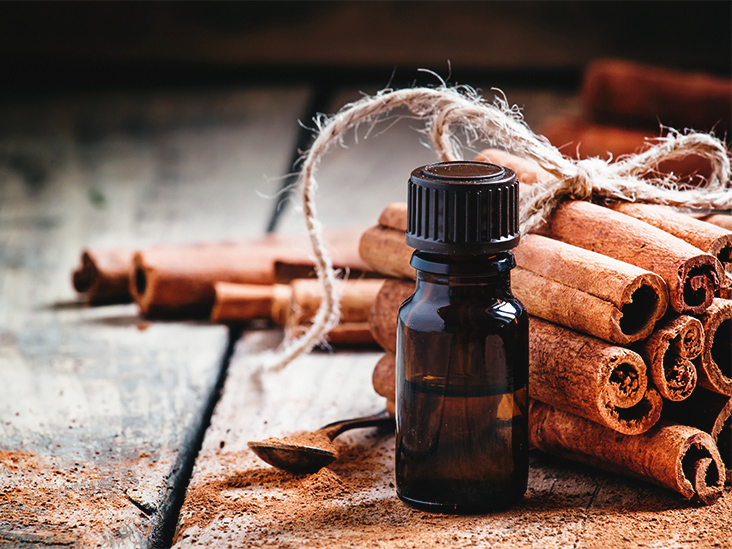
A macroscale direct method for steam distillation is also used to extract the essential oil, which is composed primarily of trans-cinnamaldehyde, from the cinnamon spice. In this method, the steam is generated in situ by heating the ground dry spice material and water in the distillation flask. (figure 2)
Procedure
Grind two whole cinnamon sticks, around 5.5g in a mortar and pestle as shown in Figure 6, and place the ground material into a 100mL 2-neck round bottom flask. Around 40mL water is added and the distillation begins. After collecting 20mL of cloudy distillate more water is added to the distillation flask from the dropping funnel. Another 20mL of distillate is added and then the distillation is paused. The distillates are combined in a separatory funnel and extracted with diethyl ether (2×20 mL). The ether layer is dried with anhydrous magnesium sulfate and the solution is filtered. The ether is removed using a rotary evaporator and the colourless cinnamon essential oil is collected. The yield is recorded.
.png)
Figure 6. Ground sticks of cinnamon.
The 1H NMR spectrum of trans-cinnamaldehyde (Figure 7) shows a doublet (7.3Hz) at 9.73ppm for the aldehyde proton (CHO). The CH proton at position 2 can be seen as a doublet of doublets (16.0Hz, 7.3Hz) at 6.69ppm, as it is coupling to both the aldehyde proton (7.3Hz) and the other alkene CH proton at position 3. The 16.0Hz coupling constant between positions 2 and 3 shows the (E)- geometry about the double bond.
The five aromatic protons at positions 5, 6 and 7 can be seen as a broad multiplet centred at approximately 7.49 ppm. The CH proton at position 3 must resonate as a doublet as it is coupling to the CH proton at position 3, but its signal is overlapping with the signal for the aromatic protons.
.png)
Figure 7. 1H NMR spectrum of trans-cinnamaidehyde, CDCI3.
The correlations between the aldehyde proton (CHO) at 9.73 ppm and the alkene CH proton at position 2 are seen in the COSY spectrum of trans-cinnamaldehyde (Figure 8). The CH protons at positions 2 and 3 are also coupling to each other. COSY correlations are also observed between the aromatic protons at positions 5, 6 and 7.
.png)
Figure 8. COSY spectrum of trans-cinnamaldehyde, CDCl3.
